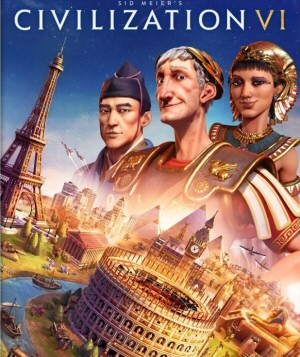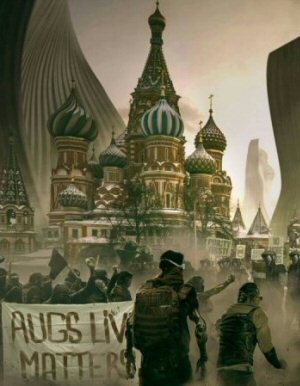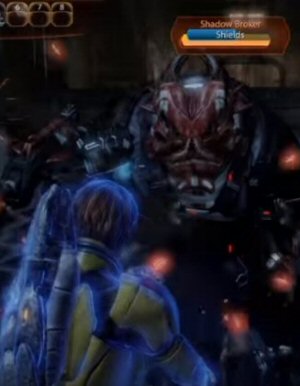I completed the RollerCoaster Tycoon base game last week and started working on the first expansion, Corkscrew Follies. Two things were immediately apparent. First, Corkscrew Follies employs the same challenges and difficulties as the base game, but provides different and additional rides and shops to meet a scenario’s demands. In fact, the research tree will tend to focus on the new elements more than the old elements, requiring you to learn to use the new facilities. The second obvious change was the implementation of scenery and ground elements to represent artificial structures like castles and a variety of other buildings, really enhancing the “themed” idea of your amusement park. Honestly, I had previously associated this change with RollerCoaster Tycoon 2. Probably because I played a lot of the RCT2 base game before I obtained the expansion packs for RollerCoaster Tycoon. It was interesting to see where RCT2’s theming came from. It becomes clear, seeing how these ideas were originally implemented, how the building structures in RCT2 are really the same thing…just with “land” that is invisible (and intangible and non-obtrusive in most situations, if I remember correctly. In RCT, there still has to be a physical piece of land which retains it’s inherent properties to apply the “appearance” of walls, ceilings, etc. to.) Unfortunately, while interesting, I never found this part of the game to be as captivating as the core park management gameplay. A big reason why I never spent all that much time in RollerCoaster Tycoon 2.
Upon realizing I was mainly dealing with cosmetic differences, I started getting a bit bored with RollerCoaster Tycoon, and went looking for other games to mix in…all sim games, of course.
But first, to finish up the original scenario challenges in RCT:

The 15th scenario, Pacific Pyramids, is an odd one. Like Evergreen Gardens, you start with a “park” that has a different function: it is a walking-tour of “Egyptian-themed ruins.” I like to think it’s a left-behind movie set. The park is medium-sized and already has a moderate amount of path…too much to be useful from the start. The pre-existing giant pyramids near the entrance actually create a great deal of value for your park…they are an expensive decoration. Keeping them is ideal, but this also creates a challenge to build around. There is one HUGE problem that must be addressed: the back-half of the park has a long underground path connecting two areas. I mentioned before that guests in RCT have a great deal of trouble with underground pathing. Heck, your *employees* have trouble with underground pathing…they can take a wrong step and go wandering over a mountain sticking to their predefined route, yet not accomplishing anything because they aren’t actually on the path. Cut this underground section off from the rest of the path immediately (you should already have cut the back-half of the park off anyway as it is unnecessary to maintain all of this at the beginning.) Make sure any guests in the underground section get out; you will most likely have to cut both ends of the path off then manually move each guest back to the front of the park. Then finish deleting the path. From there this scenario is straightforward.
The final few scenarios all introduce arbitrary and unusual restrictions. These I didn’t care for very much, although each is plausible, and probably has one or more real-world examples.

Crumbly Woods comes right after Pacific Pyramids. This is a large, established, well-running park except for one problem: the rides in the park are all around 15-years-old. They are unpopular, prone to breakdown, and one roller coaster is practically guaranteed to crash on you. You will notice in the pic above several out-of-place sections of terrain. Those were part of themed rides that I deleted. Three coasters and a car ride (normally a reliable Gentle ride) are too old to maintain popularity and are more likely to crash. As usual, the most complex coaster, in this case a double Wooden Roller Coaster, is the most prone to tragic failure. All the other pre-existing Thrill and Gentle rides can be maintained with a normal maintenance schedule and free or near-free prices. The extant Car Ride can be saved if you want, but Car Rides are slow at best, and its value can be recreated with a shorter, simpler Car Ride that isn’t taking up prime real estate. Now, I want to be fair: rides so old/bad they cripple your park isn’t really an arbitrary condition. But I included it on this list because the easiest solution to the problem is to delete all your roller coasters; certainly non-intuitive.

On the other hand, Rainbow Valley is nothing *but* arbitrary. As you can see the terrain is certainly unusual, being very wide and thin, but the size is more than adequate. The trick in this scenario is that *you are not allowed to modify the land profile in any way.* That is, you can’t level the land, you can’t raise it, you can’t lower it. You *can* build tunnels, but without modifying the land, the entrances and exits are restricted to existing, unobstructed, fully-square, right-angle faces. Which the game does provide you with, so it’s clear you are meant to use them. I didn’t. All of my tracked rides were custom in this scenario; very few pre-existing designs will fit the terrain. One of my three coasters was stock: the shuttle loop, which is an accelerated-launch coaster through a single loop that uses a gravity return to that station along the same path. It is extremely terrain-forgiving thanks to its steel structure and small footprint. I can build custom water rides and go-karts all day long; but the two custom coasters did little more than the minimum possible. This is one of the most challenging scenarios in the base game.

The final scenario, Thunder Rock, *is* the most challenging scenario…at least the first time you play it. Yeah, building on top of a giant rock is limiting. Managing the cleanliness and safety of the paths is very difficult here; there’s a lot of doubling-up from the very beginning as the routes, which use predefined 3×3 squares, don’t line up with the paths going up the rock in a useful manner. However, the most challenging part of Thunder Rock is the money limitation. This isn’t the first scenario where cash is limited in some way, but in all the previous such scenarios you have to hit some pretty high or obscure limits to discover this. In Thunder Rock, guests only have about half the money they usually do. You will find this out the fastest if you use my technique of making the rides cheap (or free) and setting a high Park Entrance fee. If I can build quickly, I usually start out with a PE fee of $15, then raise it $5 / month (or nearly: I wait until the information ticker tells me guests think my Park Entrance fee is really cheap…sometimes this DOES NOT happen every month.) In an 8-month season, this means I go past $30 Park Entrance about half-way through my first year. I am ashamed to say it took me 18 months of wondering why I wasn’t taking in very much cash (and still raising my Park Entrance fee every month or so) to realize I was only making a little bit of money on food from the earliest visitors to the park. *For months* every new visitor was bouncing off my entrance gate like it was an invisible wall, because they couldn’t afford to get in. I actually had to look this up, which is when I found out about the severe money restriction on guests. There was still some variation, so I lowered my park entrance fee to $25 and charged at least 10 cents for each ride, while leaving food prices alone. Suddenly the money started flooding in as all the people desperate to see two years of new rides finally came crashing into the park. I slammed in a few more limited-space roller coasters and beat the scenario handily. You can see I even spent a month liberally spreading trees in every unfilled area. But I also started watching the entrance every time I raised the park entrance fee after that. I did come across a scenario in Corkscrew Follies that maxed out at $50. Once I raised it $5 to $55, every other guest started bouncing. $50 twice is better than $55 once…even I can do that math.
As I began to realize Corkscrew Follies, and presumably the subsequent expansions, were mostly going to be more of the same, I started looking for other games to install and try. One of the first is a game I have only tried a few times and never beaten: Pharaoh + Cleapatra (also known as Pharaoh Cleopatra).

Pharaoh is a city-builder sim released in 1999, the same as RollerCoaster Tycoon. An expansion pack called Cleopatra: Queen of the Nile was released the following year. I’m not sure you can even buy the two games separately anymore. Pharaoh takes fundamental design cues from the Caesar city-building games, which themselves were initially heavily inspired by SimCity with subsequent versions being modeled after SimCity 2000. In fact, Impression, the developer of the Caesar games for Sierra On-line (drink), also developed Pharaoh and Cleopatra. (Note: I actually owned/own all the Caesar games, even though I’ve never played more than a few minutes. Unfortunately, I’m pretty sure I owned them through Stardock’s Impulse store. When Gamestop bought and subsequently shutdown Impulse, I lost about half the software I owned on that platform.) Like SimCity, a fundamental part of city management is placing city services where their area-of-affect covers currently-unserved locations. However, an element borrowed from the Caesar games, and seen in a similar format in RollerCoaster Tycoon, is services provided by “walkers.” For instance, a primary measurement of growth and accomplishment in Pharoah is “upgraded” housing. However, you don’t do this yourself as a player; instead you have to provide the right mix of services to create the conditions in which a house can “upgrade” itself. Some services, such as food and water availability, are provided by walkers who follow your city’s roads outward from the service provider. If they walk by a place that needs that service, the need is met. If they don’t, the need is not met…even if the service “facility” is right next door. You have no control over the route the walkers take, *except* for “roadblocks” and building as few intersections in your roads as possible. The lack of intersections is important because at every intersection, a walker makes a random decision about which way to go. The manual says the walker won’t duplicate the original decision upon reaching the same intersection, but it’s not really clear what that means. “Roadblocks,” however can be used to stop a walker from taking a particular route. ANY walker, as far as I understand. Now, considering you are really only concerned with making sure your *housing* areas are supplied, this makes a certain amount of sense…you don’t need a walker carrying water to your hunting guild, they can fend for themselves. Apparently. Same with the stone quarry; they get all the water they need from the rocks, naturally.

The game does a fair job of teaching you how to play, but I did notice in the first three levels there was always one thing left out, and that was consistently the one thing that I could not tell if I was doing. You can *almost* close the loop by combining the scenario’s instructions with the manual’s descriptions. I suspect the element I am currently missing is properly using the “overlays,” which are info-graphics meant to show you whether given needs are being met. Considering this is the element of every scenario that I currently can’t discern, I’m pretty sure that will be the answer. Installing the GOG version of Pharaoh + Cleopatra through Lutris worked the first try. I “installed” the widescreen HD patch (it’s just a directory of patched .exe files, each designed for a specific resolution), but found the graphics, especially the writing, to be too tiny at 1920×1080. Using 1280×720 worked a treat; though. I’m currently working on getting SimCity 3000 set to use the same resolution. This is a bit trickier in SC3K; you really can’t change the resolution from within the game. It will freeze the desktop and, at least as far as I can tell, force you to logout and back in to fix the problem.

Railroad Tycoon II Platinum started up first try, too. However, I was shocked to discover I couldn’t remember how to play. It’s coming back to me as I stew on it, and hopefully I’ll have a chance to write on it soon. I started to install Tropico, but then I got Tropico 4 for free from GOG the other day. I have heard several times that Tropico 4 is the most-refined and enjoyable iteration of the original game, with 5 and 6 pursuing differences significant enough to separate them from the older games. I bought Tropico when it first came out, and loved it dearly. However, I never meshed with the mechanics very well. I always reached the end of the scenario in the 2000’s (date) while still running the island somewhere around the late-1950’s. And that’s in sandbox mode; I never even came *close* to completing even the easiest scenarios. I tried reading tutorials, watching videos, and inevitably;

Maybe Tropico 4 will be different.
The latest Galactic Seasons event has started in Star Wars: The Old Republic, but there really isn’t anything to show off from that, yet. It’s a Bounty Hunting event, something they do on a smaller scale regularly, and not something I usually engage in. On top of that, to access the story element of Galactic Seasons 7 you have to be up-to-date on the storyline, and I am woefully *not* current on the story. Considering I can cache the GS story until it becomes available for me, though; this isn’t really that big of a deal. I’m mostly playing for all the free stuff you can earn every week with minimal effort.
While playing around with various games I might try installing, it occurred to me to install the original Guild Wars, the first MMORPG I ever played. In fact, I tried it specifically because of what Shamus said about it (use the “search archives” tool above to search for “guild wars” and see his posts from June 12, 2008 – June 26, 2008.) The original game is so simple and rock-solid I probably should *not* have been surprised that the install really wasn’t any more complex than launching the stock installer through Lutris. Game installed, I logged in; everything was just as I left it:

How many other people were playing this ancient multi-player? I don’t know. I didn’t check. Hang on. <logs in> In post-searing Lion’s Arch, looks like about a dozen players. About the same in post-searing Ascalon. These are both early cities in the game, so that’s not bad for an MMO a half-step above support-mode. I do seem to be getting quite a bit of lag, though. This could be my own network traffic, but I wouldn’t be surprised if the game is just so reduced at this point it’s a problem. But I did notice there were still some background downloads going on, so we’ll see. It’s been long enough since I played Guild Wars that I’ll definitely have to start a new character just to learn how to play again.
That’s it for this week, thanks for reading!
Twelve Years

Even allegedly smart people can make life-changing blunders that seem very, very obvious in retrospect.
Civilization VI

I'm a very casual fan of the series, but I gave Civilization VI a look to see what was up with this nuclear war simulator.
Deus Ex and The Treachery of Labels

Deus Ex Mankind Divided was a clumsy, tone-deaf allegory that thought it was clever, and it managed to annoy people of all political stripes.
What is Piracy?

It seems like a simple question, but it turns out everyone has a different idea of right and wrong in the digital world.
This Game is Too Videogame-y

What's wrong with a game being "too videogameish"?
 T w e n t y S i d e d
T w e n t y S i d e d

I loved playing Guild Wars. Still boot it up every so often just to go photo shooting,
It was a beautiful game at the time. Done very well with the technology available. *I* think the graphics still hold up…but I also think Star Wars: The Old Republic still looks amazing and am always surprised when I see someone post in the SWTOR sub-reddit “just came back to the game after a decade and forgot how dated and bad the graphics are.” I mean, Guild Wars you can see the low poly count under the PC textures pretty easily, at least if you know where to look. The textures do a good job of covering straight lines. In SWTOR you really have to catch specifc things at the right angle and in the right light to see a polygon edge. Bald heads are the only really easy thing to see. Guild Wars 2 is absolutely gorgeous, and has fun gameplay…I just don’t like the story nearly as much. I did read they are finally bringing in some of the expansion content from the first game, either Elona or Cantha, I think…I may re-install and see what that’s like. Someday.
Since we’re talking about the genre more broadly now I’m “currently” playing Two Point Hospital. I’m using quotation marks because this playthrough has been going on and off for probably the last two years. I think this is always going to be a somewhat tricky and niche genre because there is a lot of balancing here. On the one hand it needs to have a solid base mechanic that stays at least somewhat engaging despite the repetition, on the other it needs to ramp up the difficulty and/or throw in enough varied challenges to keep things interesting, and this balance is going to be in a different spot for everyone.
In TPH I’ve done the main levels, although some of them have challenge variants I have not yet tackled, and I’m slowly going through the DLCs which, far as I can tell, rely on some gimmicks like patients coming in big waves or starting with some staff members whom you cannot fire and who have to perform particular tasks, or your finances working differently than default. Still, once you manage to stabilize the cash flow most of the time it involves a lot of waiting, especially if you’re aiminig for the three star objectives, which are usually “the same but more of it”, which is why I tend to approach it as a low-engagement game to play while watching a stream or chatting with someone.
Oh and I actually fired up the OG Theme Hospital some time ago but having played it before kinda got bored after a couple levels knowing there wasn’t really going to be anything unique popping up further down the line.
Trying to remember if I actually played Theme Hospital or if I only watched Let’s Game It Out do a hospital sim…I know he’s done several. I have a theory that once you watch LGIO ruin a game you can’t ever play it normally yourself. I bought Rise of Ages because of his playthrough (through the first few sections of the game) as Johnny Hotbody, but the game just isn’t as much fun without the jokes and weird assumptions.
I could never really get into Guild Wars. The title put me off from the start as I never played any MMO for the PvP, and Guild Wars sounds like a very PvP title. I am looking forward to seeing what you have to say about it.
There’s actually a whole story about that. Guild Wars was *meant* to be a PvP-only game; that was its unique *hook*. But then they put in a “tutorial” game to teach you how to play the PvP, and they ended up turning the tutorial into a full game by itself.
Fun fact, Guild wars was my first (and only)mmorpg. I’d been eying out wow for a while but the subscription model was a massive put off, and then came GW with its “pay only once” plan….
i had good times with it :)